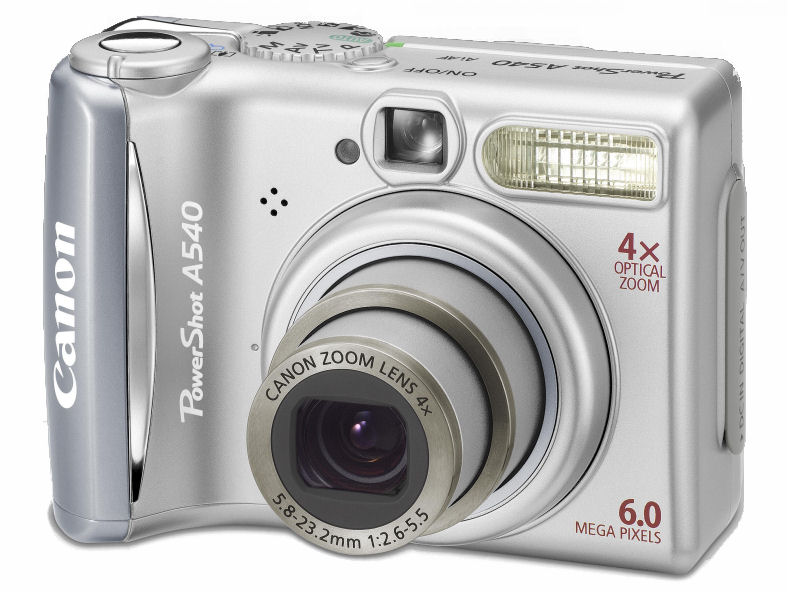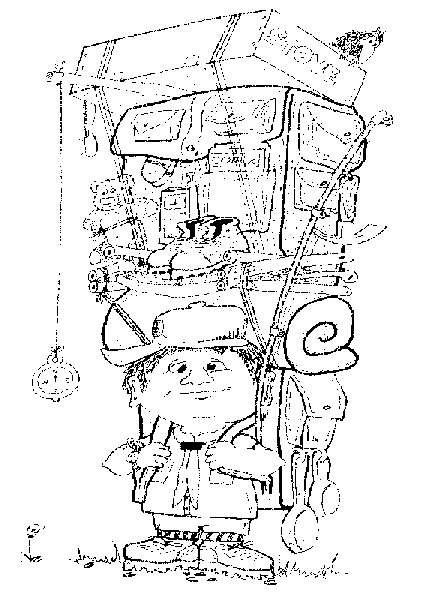
Snow Leopard vs Osprey
In 2002, in preparation for my 2nd chunk hike, I looked at my North Face pack and it was in bad shape after so many hikes. I purchased the Osprey Crescent with pockets and quiver since it was of comperable size (4900 cu in for the Snow Leopard vs 4700 for the Crescent (with out pockets and quiver). The new pack performed well on the 2002 hike and expect it to do the same on this hike.
I really think that I will purchase a new backpack for my next hike. The Osprey Crescent 75 has a number of issues that really had a negative impact on my hike. First because the lid uses the same Ladderlock Buckles as the shoulder straps (so two straps are in the same buckle), they CANNOT BE ADJUSTED without taking off the pack and a lot of work (no way to adjust while hiking). Also I could not adjust the pack easily for changing loads (like right after picking up a food drop vs. almost out of food). I finally adjusted the pack for the median weight, but the pack only really felt comfortable for a day or two in-between town stops and was constantly chafing me (see first aid kit). Also, the pack cover, which was the CORRECT ONE for the pack, did NOT FIT! Lastly the pack has not hydration system, instead it has these add on side pockets that fit nalgene bottles, but just barely. I do like the quiver, that I use for items I need during the day, but that hardly makes up for the negatives of the pack. I can see why Osprey discontinued the line years ago.
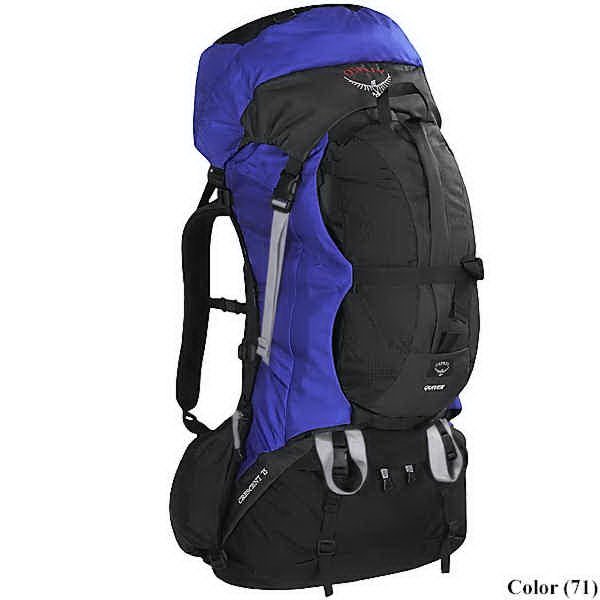
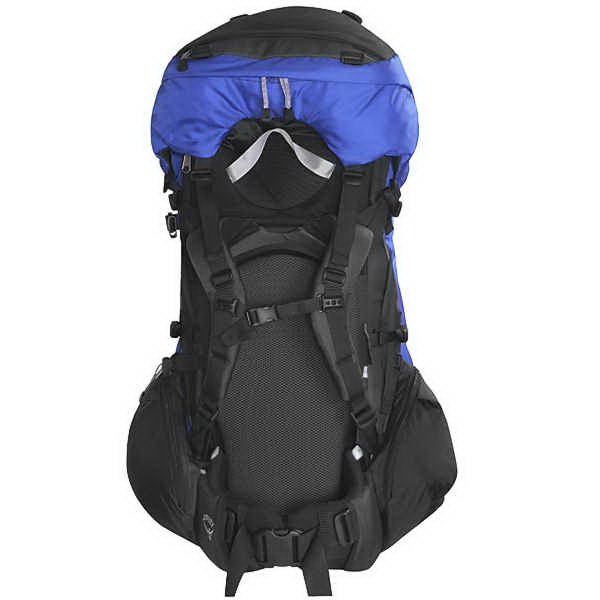
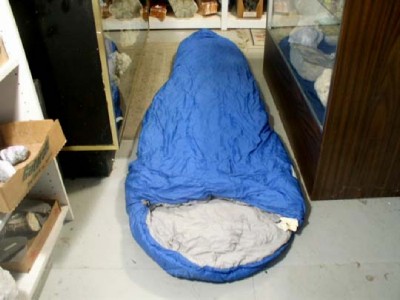
Cat's Meow Sleeping Bag vs Polar Fleece Bag
My Cat's Meow sleeping bag has done well since I bought it and is still in great shape. Just like in 2002, I will probably change to my Equinox Polar Fleece Sleeping Bag liner if it gets to hot for the Cat's Meow.
Update: After re-reading logs from 1996 and 2002 and consulting the current weather forcasts for PA, I realized that I probably will be OK with the polar fleece to start. In 96 I exchanged sleeping bags in VA on 6/16 and I used it the entire hike in 2002 and started on 6/3 in VA and ended in PA on 7/13. Should be ok, but if not I can always put on a layer of cloths for warmth.
See Compression Sack for info on how the sleeping bag was stored for hiking
The polar fleece bag did fine for most of the trip, but I did lose sleep if the temperature got below 60 deg at night or if it was below 68 deg and windy (wind just went right through the fleece). For The Whites, I will definitely want my Cat's Meow sleeping bag!

Ther-a-Rest
The therm-a-Rest has also done very well on all my hikes and seems to be holding up well. I did add the Chair Conversion Kit back in 2002 (it was a going away gift from my parents). At first I accepted it and thought I would end up shipping it back home, but then I started using it and fell in love. It helped me relax while cooking dinner and proved to be handy when I just wanted to sit at a senic overview and watch the world go bye. I think it is worth the weight in my pack for a little confort along the way.
The therm-a-rest developed a leak during the hike (it was over 15 years old) and was replaced with a Therm-A-Rest ProLite in Delaware Water Gap. Unfortunately it did not fit in the chair conversion kit (so I left that in a hiker box). I did find that it really did not self inflate (it always needed to be blown up), but did lighten the pack a few oz and allowed me to get a good nights sleep.
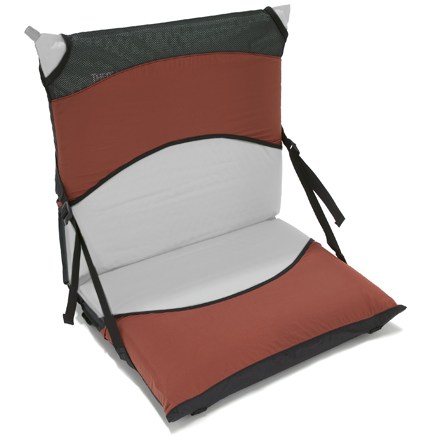
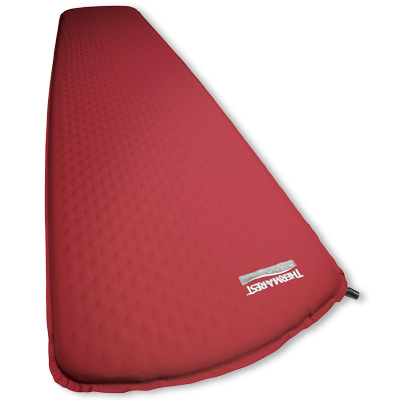
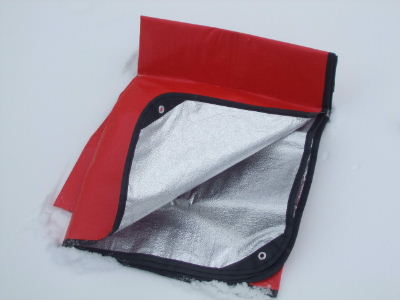
Solar Emergency Blanket
I use this in shelters as a ground cloth to protect my therm-a-rest and used it in the past as a tarp (hence the 4 extra gromets added). I have gone though a few of these over the years, as they do ware out over time, but I plan to carry one this trip as well.


OR Advanced Bivey vs Fly Creek UL1 Tent
I loved my bivey on the previous 2 trips, but when I went to check it for this trip I got an terrble surprise. The floor and stuff sack lining had turned into goo. I do not know what chemical reaction took place (after all it was over 14 years old), but it was a sticky mess of goo and I had to just throw it out. Back in 2002 I did purchase a Hennesy Hammock because it was all the rage that year, but I tried it out and found that it always came out of the bag as one big knot (even with what they called "snakeskins" that were great to keep the nylon organized, but did nothing for the guidelines and ropes). But when I went to my local outfitter and saw the AT Hybrid Hammock and after seeing this review I thought it would be something worth trying. For the same weight as my bivy, I would get a a-frame tent, lean-to, hammock and fly.
After thinking about it for a bit (and experimenting with the Hammock), one thought kept coming up....BUGS! One of the things I loved about the bivey was it was a haven from bugs, and that would not be the case with the hammock. Also I needed a lot of ropes, rigging etc for the hammock. On a trip to buy that stuff I ran across the Big Agnes Fly Creek UL1. For a little more weight than the bivey, I could have a tent with full fly netting. It is expensive ($300) but that is almost what I spent on the bivey. But once I saw it, I said that is my shelter for the trip and a lot of debate ended.
I cannot say how many times I said to myself "Thank G-D I decided to buy this tent!" On my previous trips I almost always stayed in shelters, NOT THIS TRIP. It was my bug haven, windbreak, and sanctuary. It weathered the downpours and kept out the bugs. The only negatives were that if the vestibule door was left opened it trapped flies in between the tent and rainfly and, on cool nights, condensation would form if the vestibule door was not left opened for ventilation. But it was money WELL SPENT!


First Aid / Repair Kit
On the trail you must be prepared for anything. This kit (that I put in a Medium 7" x 10" OR deluxe portable pocket) carries everything I need to do first aid on myself and on my equipment.
Some Comments:
Please note the list of first aid supplies is for the start of the hike. There is probably way too much stuff once you get past the "just starting off" stage of the hike but experience has shown me to take more than I think I will need then cut back each time I resupply.
I do have to make a comment here on stove maintenance: It just amazed me how many people did not know how to field strip and repair their stoves. My stove jet would clog every now and then, but I could fix it easily in the field. There is nothing worse than eating raman noodles uncooked, but still people didn't take the time to learn before they started hiking. This should also be a consideration when choosing a stove (can it be repaired or cleaned easily).
One thing I did add to the first aid kit during the hike was Body Glide. This anti-chafe balm helped me with the constant irritation from my pack on my hips and butt, especially when the heat aggravated the irritation. A fellow hiker recommended it, and he was right!


Cook Kit
This was a gem I was introduced to at an REI seminar on long distance backpacking. It uses a Colman Peak 1 stove case (basically a two piece aluminum box, the top part can act as a cover / frying pan and the bottom piece is a pot), but the great thing is it fits a wisperlight stove, pump, windscreen, pot scrubber, matches, and your spoon/fork all in one nice box. Once I saw it I have used it ever since.


The Office
I choose to carry the Thru-Hiker's Handbook put out by Trailplace although some cary the Thru-Hikers' Companion put out by the ALDHA (well in reality I carry this one too, but loaded as a pdf on my phone). I did rip out the pages of the sections I already hiked in 96 and 2002 to save weight and pack space. I also leave one copy at home for my mail drop person to refer to as well.
I also carry the trail maps because I like having them and they do not weigh too much (I do mail the old ones home and pick up new ones in my maildrops).
I also carry a pen (when there isn't one in the shelter and I want to write in the register), a sharpie pen (to write on the maps) and a little pad for quickly jotting down things.
These are all personal choices, I could leave all this at home and just rely on my cell phone (with the ALDHA Thru-Hiker's Companion, Trail Descriptions from the section guide books, Google Maps and much more trail info) but I like having a paper backup just in case the phone gets smashed or dies.
I was disappointed in ALL the thru-hiker companions this year. It seems like all three (the Thru-Hike's Handbook,Thru-Hikers' Companion and The A.T. Guide) were all incomplete and filled with errors. Hikers were constantly comparing their books to get the full picture. Although the elevation profiles have improved, the overall accuracy of the books seems to have gone down since my last hike.
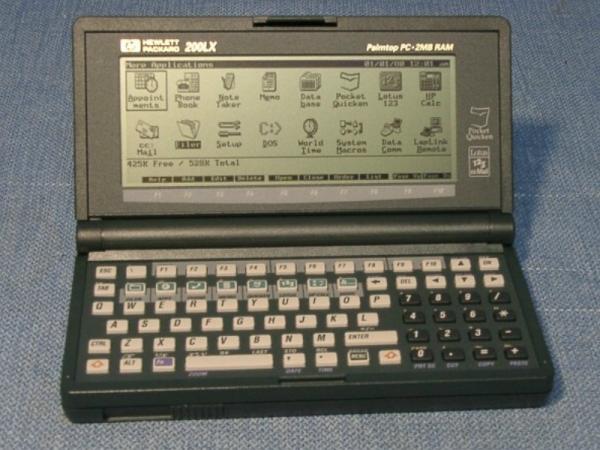
HP200LX vs Droid
Back in 1996 I purchased a HP200LX palmtop computer for my first hike.
My thinking was as follows:
All those things were true, but with technology growing by leaps and bounds, the Droid phone has all that capability with color/graphics, GPS, not to mention cell phone and 3G. Those last two do scare me a bit: will it allow the "real world" to impinge on my hike. Time will answer that.
I do miss one thing about my HP200LX: it was powered by AA batteries. I am still experimenting with how to keep the Droid charged on the trail. I tried an SOS Charger but found I would have to crank and crank all night to charge the phone (just not enough juice). I am sure the noise would also disturb other hikes in the shelter as well.
I also tried an Energizer Energi to Go system that uses AA bateries. Seems to be the better choice so far, but still figuring out how many AA batteries I will need to carry with me on the trip. So far it looks like one set of batteries = 1 charge of the cell phone.
The Droid definitely added and did not detract from the hike. Most of the time I turned off all the communications features (3G, Cell Phone, GPS) to save on power. I was able to send photos and logs to the internet from most locations on the trail (except small towns in gaps) although coverage was getting less reliable the further north I went. The Energi to Go system worked well and I was able to keep my phone charged in the backcountry and ended up getting about one and a half charges per set of Energizer Ultimate Lithium batteries and only needing to charge the phone every 2nd day (unless I uploaded a lot of pictures to the internet). I also enjoyed listening to music at night on more than a few occasions. I did notice that almost everyone had a cell phone this year, quite a change from my 2002 hike where people frowned upon people whipping out a cell phone near a shelter...how times have changed.
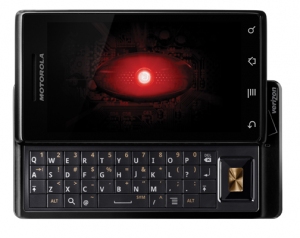

Hiking Boots
In 1996 I used my Merrell Wilderness Hiking Boots. These things were beasts! They were really mountaineering boots, hot and heavy. The Vasque Scouts are just as heavy, but do have some breathability (although not much), but for the start of this hike, I am concerned about ankle support since I am starting in the middle of the PA rocks (which have twisted my ankle before). After I get though the rocks, I am thinking about switching to the Merrell Pulse II's I have because they are lighter and breath better.
As expected, the Vasque Scouts were beaten up pretty good by the PA rocks and I did discard them (see log) and switch to the Merrell Pulse II's. What I didn't expect was the Merrell's blowing out before the end of this year's hike (see log). Had to go into town and I bought a pair of Keen Klamath boots. They did ok (considering my limited choices), but I feel that if I would have started in these boots, my feet would have been in worse shape than they were, but since my feet were pretty tuff at this point in the hike, they were ok (probably I would have needed thicker socks if I started with these boots, and would have needed to break them in quite a bit before the hike). Merrell, to their credit, did replace my Pulse II's with a pair of Isotherm 6's, but I did not pick them up until I was about to go home, so I didn't get a chance to try them during this hike.
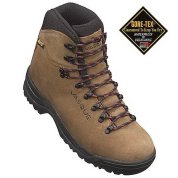

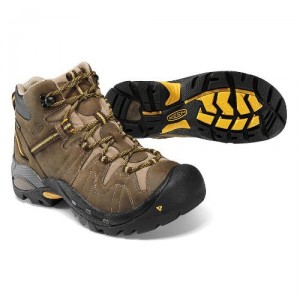


Teva vs Chaco
There is nothing better than taking off your boots after a 20 mile day! But you do need something around camp. Sandals are a great choice. I am changing from Teva's to Chaco's for 3 reasons: They wore out (hey its been 14 years since my first AT chunk hike). The velcro would come undone when crossing streams and rivers. The soles were terrible on slick mud!. The Chaco's should solve these problems, with Vibrum soles and a strap and buckle system. But sandals were wonderful on my last two hikes and I will not leave home without them.
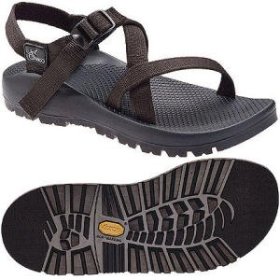
Cloths
My clothing list has changed a bit, more due to replacement of gear and time of year hiking than anything else.
I am going to try gaiters again. I hated them in 1996 and left them in a shelter, but with the summer coming on and the fact I hate water in my boots, I am willing to give them annother try.
The Fleece Pillow Case really isnt a pillow case, it came with a fleese throw I bought at REI on sale, but I found it great for a pillow when stuffed with cloths and is one of those creature compforts I cant live without. Depending on what you stuff in to this three zipper sided cover adjusts the firmness of the pillow.
One last note - you will see I dropped polypro liner sox from my list. In 1996 I found that they CAUSED more blisters than they prevented and stopped using them after that. They would bunch up and were there was a crease, there would be a blister. I do not know if the experts still suggest polypro liners or not, but I do not.
My clothing choices were dead on right for this trip. I wore every piece of clothing I brought. I did find that I kept one pair of swimtrunks and one shirt clean so I could use them when I got to town. I hiked exclusively in the sleeveless muscle shirt and swim trunks. and kept the underware and shorts for around camp and for sleeping (along with the second t-shirt when it was cool enough).
The gaiters were a MUST for this trip. Between poison ivy in PA and the mud in VT, there was only a few days that I didn't wear them.
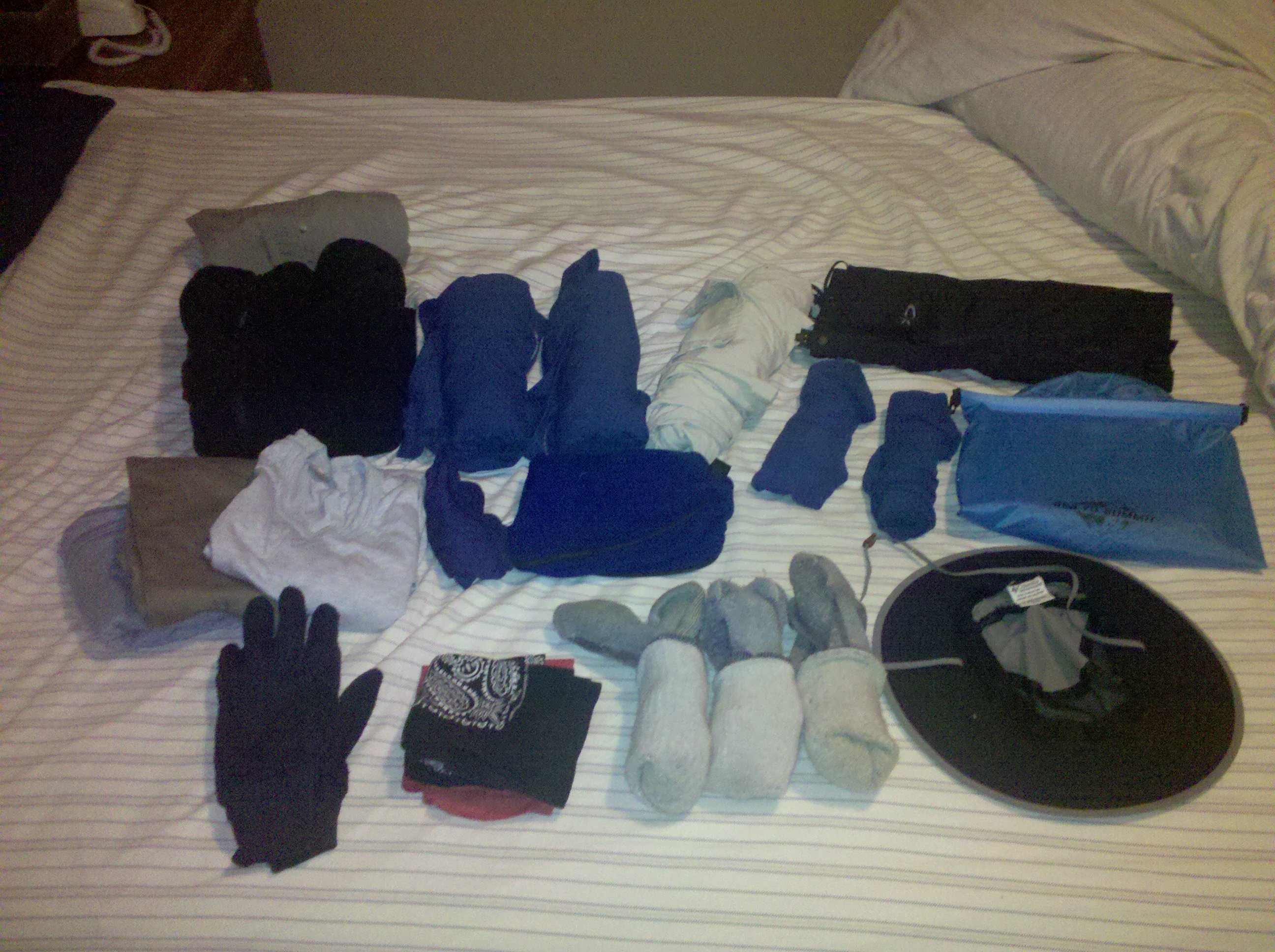

Stuff Sacks
I switch from the OR Hydroseal Stuff Sacks to the Sea to Summit Dry Sacks because the OR stuff sacks were warn out and the Sea to Summit were a lot lighter, but still waterproof. I am a little concerned that the construction might be TOO LIGHT, but this will be determined during the hike. In the mean time the pack is lighter.
Also made the same change with my compression sack for the sleeping bag, since my Granite Gear Compression Sack was NOT waterproof and the Sea to Summit Dry Compression Sack is and still weighs less!
The stuff sacks held up during the trip (one does show signs of wear - the seal tape is coming off) but my cloths and sleeping bag never got wet - even though the inside of the pack did get wet (more like swamped) on more than one occasion.


Flashlight vs LED Headlamp
Again technology improves and so do my choices. In 2002 I got a headlamp and now a flashlight just seems stupid. The LED technology puts out more light, for longer, with the same weight. In 2002 I do not think I changed my headlamp's batteries one time (compared to 1996 were I changed the batteries every town stop beacuse I know they would not last). I also like the fact that I do not have to hold the light (you just have to make sure you do not look up and put your light right in someone's face!)
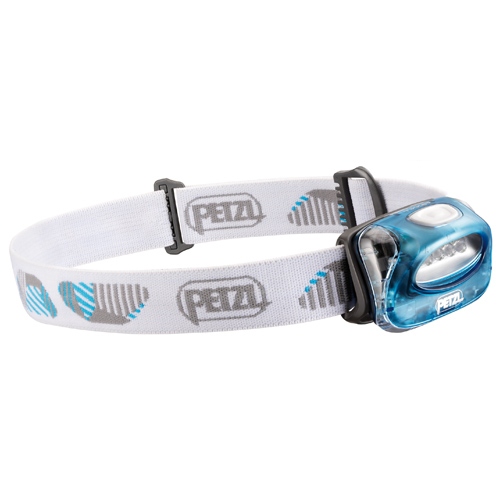

Water Filter
Comments: I have had giardia once and did not want it again so I filtered all my drinking water no matter what the source was. It seems, however, that water filters are THE biggest maintenance item for the hikers that carry them. My PUR Scout became unusable 3 times in 1996 (but that was fantastic compared to some I saw). One of these problems was repairable in the backcountry, but, since the fix was not in the instruction, I didn't know what the cause was or the fix until I talked to the rep at Trail Days. I ended up teaching this trick to 4 other hikers with non-operational Scouts.
Here are the missing repair instructions: If, when you pump, the water goes up the inlet tube and then right back out the inlet on the down stroke do the following: Open the pump to reveal the cartridge (this procedure is in your instructions). Look for the WIDE band on the bottom of the filter. Pry this up (WARNING: DO NOT USE a blade of a pocket knife for this. Any nick in this band will make the pump useless). Under the band are 4 small holes. Most likely these holes are plugged. Clean them out with water so you can see though them. Then reassemble.
I am not sure if they fixed this issue when they changed the name of the PUR Scout to the Guide and changed the cartridge design (I hope so).
The filter did fine this trip, but I did see a Platypus filter system that was gravity fed that I want to look into.


Tracks - Sherlock Staff
I will say it again - my staff has saved me from so many falls I just don't leave home with out it!
My only change to the staff is the strap, I changed it from the nylon strap to a cloth one (cotton strapping with a grommit). I found it much more comfortable, but I do need to replace it for this hike, since it is starting to rip.

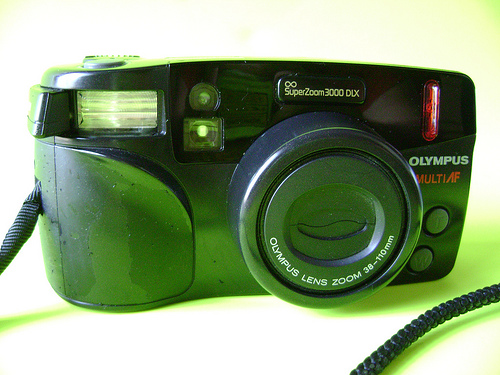
Olympus 3000 vs Cannon Powershot A540
I gave my Olympus to my folks, but either way I would switch to a digital camera just so I can get the full quality of the image to the internet when I get home. My shots in 1996 and 2002 were flat bed scans of prints, which was VERY time consuming and they photos lost a lot in the scan process. Also I like the idea of being able to see the shots right away so I don't get home thinking I had this great shot when it wasn't. Again improvements in technology!
I could use my cell phone camera and save weight here, but I want good photos for this once in a lifetime hike, and this camera has many more features and the ability to zoom so I take it. Also, in '96 my camera fell off a cliff, and I was without a camera for miles, this way I have a backup. Again a personal choice!
